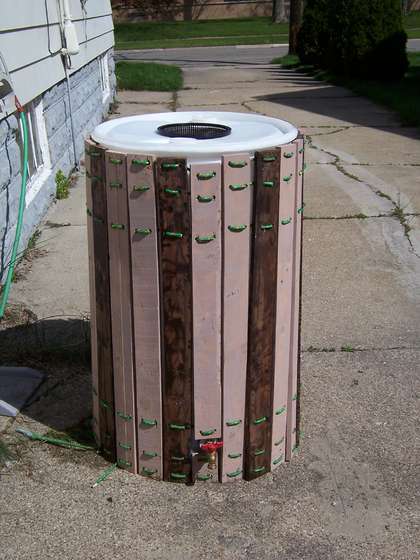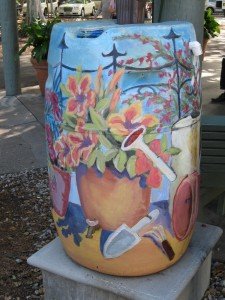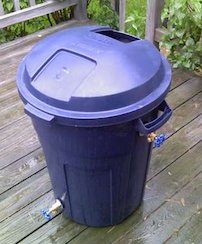Rain Chains and Rain Barrels
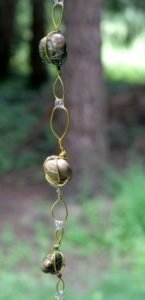
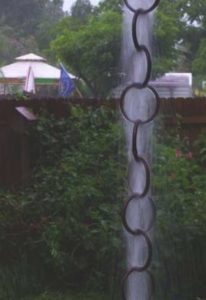
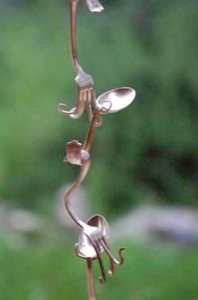
Often water that comes to city dwellers in the form of rain is hurried into storm sewer systems and away by surfaces that don’t absorb water. Rainwater that falls on porous ground is filtered through layers of soil and rock and into ground water aquifers or into streams, rivers, and lakes unassisted. A large percentage of household water is sprinkled on lawns and gardens and is a crazy inefficient way to water plants. Using a rain barrel to catch the water flowing from eave troughs is one of the simplest cheapest ways to conserve water and divert it from the storm sewer system. If there is a ban on watering during times of dry weather, it may be the only way to avoid having to watch your garden wilt. Rainwater is oxygenated, not chlorinated, and warmer than tap water, qualities that make it a better source for plants and safer for the environment. Chlorine is bad for soil bacteria. You will notice the difference in your plants too when you don’t feed them chlorinated water! To be safe for kids rain barrels need to have a secure lid. Plastic barrels are used for storing nice and not-so-nice things so know where your barrel comes from and make sure it’s clean. Setting up a rain barrel is simple. The downspout of the eaves trough runs from the roof right down to the ground. Shorten it enough to get the rain barrel underneath the spout. Most downspouts are a series of aluminum tubes with tapered ends tucked into one another and attached to the building. Plastic tubing or flexible piping can be attached to the spout to direct the water right into the barrel or even more than one barrel at the time. You can add a screen filter and an overflow hose to move extra water to the garden when it rains a lot. Some rain barrels you purchase may also have a tap at the bottom where a hose can be attached. If you are looking to buy a rain barrel check with environmental groups in your community or soil and water conservation. The usual costs is $100+. This is a good easy inexpensive way to enhance the appearance of a plastic rain barrel . . .or whatever. Surround it using slats from a pallet! Drill a few holes top and bottom and then let the kids string them or wire them together.
